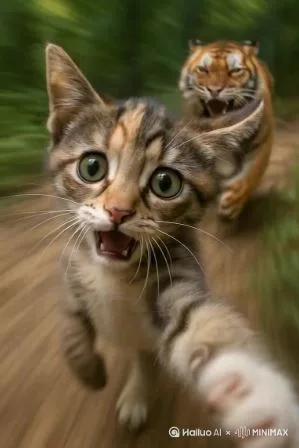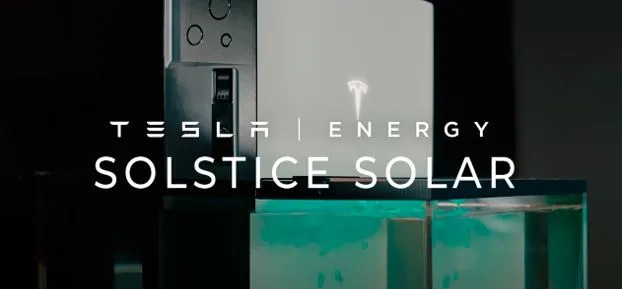AI Image Generator: Create Stunning Posts Effortlessly
Creating engaging visual content has never been more accessible thanks to artificial intelligence. AI image generators have revolutionized how individuals and businesses produce stunning visuals for social media posts, marketing campaigns, and creative projects. These sophisticated tools transform simple text descriptions into professional-quality images within seconds, eliminating the need for expensive design software or advanced technical skills. Whether you’re a content creator looking to maintain a consistent posting schedule, a small business owner seeking eye-catching promotional materials, or simply someone who wants to bring creative ideas to life, AI image generators offer an efficient solution. The technology has evolved rapidly, now capable of understanding complex prompts and generating images in various styles, from photorealistic renders to artistic illustrations. This article explores how AI-powered tools are reshaping content creation, making it possible for anyone to produce visually compelling posts that capture attention and drive engagement across digital platforms.
Understanding the Power of AI in Video Creation
Artificial intelligence has fundamentally transformed video creation by bridging the gap between static images and dynamic visual storytelling. Modern AI systems can analyze still images and text inputs to generate cohesive video content that flows naturally, incorporating transitions, motion effects, and even background music. This technology leverages deep learning algorithms trained on millions of video sequences to understand how objects move, how scenes transition, and what makes content visually engaging. The real power lies in democratizing video production—what once required expensive equipment, editing software expertise, and hours of rendering time can now be accomplished in minutes through intuitive interfaces. AI video tools interpret creative intent from simple descriptions, automatically handling technical aspects like frame rates, resolution optimization, and color grading. For social media marketers, this means rapidly producing multiple video variations to test different messaging strategies. Content creators can maintain consistent output without burnout, while businesses can generate promotional videos without hiring production teams. The technology continues advancing, with newer models capable of understanding context, maintaining visual consistency across scenes, and adapting styles to match brand guidelines, making professional-quality video content accessible to anyone with a creative vision.
How AI Tools Enhance Video Content
AI tools elevate video content through intelligent automation that goes beyond basic editing functions. These systems analyze your source materials—whether images, text, or rough footage—and apply sophisticated enhancements automatically. Color correction algorithms adjust lighting and saturation to create professional-looking visuals, while motion tracking ensures smooth transitions between scenes. AI-powered audio enhancement removes background noise and balances sound levels without manual mixing. Perhaps most impressively, these tools can generate missing elements: if your video needs a specific scene or transition, AI can create it based on context from surrounding content. The technology also optimizes videos for different platforms automatically, adjusting aspect ratios, durations, and compression settings to meet specifications for Instagram Stories, YouTube Shorts, or TikTok. Smart captioning features transcribe speech accurately and position text dynamically to avoid obscuring important visual elements. Background removal and replacement happen instantly, allowing creators to place subjects in any environment. These enhancements work synergistically, transforming basic inputs into polished videos that maintain viewer attention and convey messages effectively across any digital platform.
Key Features of AI Image Generators
Modern AI image generators offer a comprehensive suite of features designed to meet diverse creative needs. Text-to-image conversion stands as the foundational capability, allowing users to describe their vision in natural language and receive corresponding visuals within moments. Style customization enables creators to specify artistic approaches—from hyperrealistic photography to watercolor paintings, anime aesthetics, or vintage poster designs—ensuring outputs align with brand identity or personal preference. Resolution control produces images suitable for various applications, from social media thumbnails to high-resolution prints for marketing materials. Advanced generators include inpainting features that let users modify specific portions of generated images, replacing backgrounds or adjusting elements without regenerating the entire composition. Batch generation capabilities allow creating multiple variations simultaneously, helping users explore different interpretations of the same concept quickly. Many platforms now incorporate negative prompts, where users specify what they don’t want in the image, refining results with greater precision. Template libraries provide starting points for common use cases like product mockups, social media banners, or blog headers. The integration of aspect ratio presets ensures images fit platform requirements perfectly, whether creating vertical Instagram Stories, square posts, or widescreen YouTube thumbnails. Some advanced tools even offer image-to-image transformation, where users upload reference photos that guide the AI’s creative direction while maintaining compositional elements, giving creators unprecedented control over their visual output.
Ease of Use and Accessibility
AI image generators have been deliberately designed with user-friendliness at their core, removing traditional barriers to visual content creation. The interfaces typically feature simple text boxes where users type descriptions in everyday language—no technical jargon or complex parameters required. Most platforms operate through web browsers, eliminating software installation, system compatibility issues, or storage concerns that plague traditional design applications. The learning curve remains minimal; users can produce their first usable image within minutes of accessing the platform, with intuitive controls for basic adjustments. Many generators offer prompt suggestions and examples that guide beginners toward effective descriptions, teaching best practices through demonstration rather than lengthy tutorials. Mobile accessibility has expanded significantly, with responsive designs and dedicated apps allowing content creation from smartphones during commutes or between meetings. Free tiers and trial periods let users explore capabilities without financial commitment, while subscription models remain affordable compared to professional design software licenses or hiring graphic designers. The technology handles technical complexities automatically—color theory, composition rules, lighting principles—allowing users to focus purely on creative vision. This accessibility has opened professional-quality image creation to students, nonprofit organizations, solo entrepreneurs, and hobbyists who previously lacked resources for visual content, fundamentally democratizing digital creativity across economic and skill boundaries.
Step-by-Step Guide to Creating AI Videos
Creating compelling AI videos begins with clarifying your content objective—whether you’re producing a product showcase, educational explainer, or social media clip determines the approach. Start by gathering your source materials: write a clear script or key message points, collect any images or video clips you want incorporated, and note your preferred visual style. Access your chosen AI video platform and create a new project, selecting the appropriate format based on your distribution channel. Input your primary content by pasting text descriptions or uploading images that will form the video foundation. Most platforms allow you to specify duration, so set this according to platform requirements—15 seconds for quick social posts, 60 seconds for detailed stories, or longer for comprehensive presentations. Define the visual style by selecting from preset templates or describing aesthetic preferences like “corporate professional,” “vibrant and energetic,” or “minimalist modern.” Configure basic settings including aspect ratio, background music preferences, and whether you want AI-generated voiceover or text overlays. Once parameters are set, initiate the generation process, which typically takes between one to five minutes depending on video length and complexity. Review the initial output carefully, checking that visual transitions flow smoothly, text appears at appropriate moments, and the overall pacing matches your message. Make refinements using the platform’s editing tools—adjust timing, swap scenes, modify text placement, or regenerate specific segments that don’t meet expectations. Test the video on your target platform to ensure proper display, then export in the optimal format. Save your project settings and successful prompts as templates for future videos, building a library of proven approaches that streamline subsequent content creation and maintain consistency across your video portfolio.
Choosing the Right AI Tool
Selecting an appropriate AI video tool requires evaluating several critical factors aligned with your specific needs. Assess the platform’s input flexibility—some excel at text-to-video conversion while others work better with image sequences or existing footage enhancement. Consider output quality by examining sample videos from each platform, paying attention to resolution options, smoothness of motion, and realism of generated elements. Platform specialization matters significantly; tools designed for marketing videos offer different features than those optimized for educational content or entertainment. Learning how to make ai videos effectively involves understanding which platforms best suit your creative requirements and workflow preferences. Evaluate the template library to ensure it includes styles relevant to your industry and brand aesthetic. Check integration capabilities if you need the tool to work with existing workflows, social media schedulers, or content management systems. Trial periods provide invaluable hands-on experience—test each platform with your actual content requirements rather than generic examples to reveal practical limitations or strengths that specifications don’t capture.
Inputting Text and Images
Effective input techniques dramatically influence AI video output quality and relevance. When entering text prompts, structure descriptions with specific details about desired scenes, actions, and atmosphere rather than vague concepts—”a chef flipping pancakes in a sunlit kitchen with steam rising” generates better results than “cooking video.” Break complex narratives into distinct scenes or shots, inputting each separately to maintain clarity and control over the sequence. For image uploads, ensure files meet minimum resolution requirements and feature clear subjects without excessive clutter that might confuse the AI’s interpretation. Name your files descriptively before uploading, as some platforms use filenames to understand content context. Arrange images in your intended sequence before processing, as reordering afterward may disrupt the AI’s understanding of narrative flow. When combining text and images, explicitly state how they should relate—whether images serve as style references, scene backgrounds, or primary subjects. Include timing preferences in your descriptions, specifying which elements should appear when and for how long. Utilize placeholder text for sections where you’ll add custom captions later, maintaining proper pacing without committing to final wording prematurely. This methodical input approach provides the AI with clear direction, resulting in outputs that require fewer revisions and better match your creative vision.
Customizing Your AI-Generated Video
Post-generation customization transforms good AI videos into exceptional, brand-aligned content that resonates with target audiences. Begin by adjusting the pacing—most platforms allow extending or shortening individual scenes to emphasize key messages or accommodate viewer attention patterns specific to your platform. Refine transitions between scenes by selecting alternatives from the tool’s library; hard cuts work for energetic content while dissolves suit emotional narratives. Customize text overlays by modifying fonts, colors, and positioning to match brand guidelines, ensuring readability across device sizes by testing on mobile previews. Audio customization significantly impacts viewer engagement—replace default background music with tracks that match your content’s emotional tone, adjusting volume levels so music enhances rather than overwhelms any voiceover or dialogue. Add or modify captions for accessibility, positioning them to avoid obscuring important visual elements while maintaining synchronization with audio. Apply color grading filters to create consistent mood; warmer tones convey friendliness and energy while cooler palettes suggest professionalism and calm. Insert your logo or watermark strategically, making it visible without dominating the composition. Fine-tune the opening seconds specifically, as these determine whether viewers continue watching—strengthen hooks by placing the most compelling visual or message first. For longer videos, add chapter markers or visual breaks that help viewers navigate content. Export multiple versions with different calls-to-action to test which messaging drives better engagement, then analyze performance data to inform future customization decisions and continuously improve your video content strategy.
Best Practices for AI Video Creation
Successful AI video creation requires strategic planning beyond simply generating content. Always start with a clear content brief that defines your target audience, key message, and desired action, ensuring every creative decision supports these objectives. Maintain brand consistency by creating style guidelines that specify preferred color palettes, fonts, music genres, and visual aesthetics, then reference these with each project. Optimize for platform-specific requirements from the outset rather than adapting afterward—vertical formats for Stories, square for feeds, horizontal for YouTube. Test different prompt variations to discover which phrasing produces the best results with your chosen tool, documenting successful formulas for future reference. Review generated content critically before publishing, checking for visual artifacts, logical inconsistencies, or elements that might misrepresent your message. Balance AI efficiency with human creativity by using generated content as a foundation that you enhance with custom touches, ensuring videos feel authentic rather than formulaic. Monitor performance metrics after publishing to identify which video styles, lengths, and messages resonate most with your audience, then refine your AI creation approach based on these insights for continuous improvement.
Ensuring Quality and Authenticity
Quality control begins with careful prompt crafting that specifies realistic expectations and avoids requesting elements beyond the AI’s capabilities. Review every generated video frame-by-frame for visual glitches, unnatural movements, or inconsistent lighting that undermines professionalism. Verify that any AI-generated faces, products, or locations accurately represent what you intend to communicate, avoiding misleading representations. Add authentic human elements—your own voiceover, genuine customer testimonials, or behind-the-scenes footage—that complement AI-generated visuals and build trust with audiences. Always disclose AI involvement when appropriate for your audience and platform, maintaining transparency that preserves credibility and aligns with evolving content authenticity standards.
Embracing AI-Powered Visual Content Creation
AI image and video generators have fundamentally changed the landscape of content creation, making professional-quality visuals accessible to everyone regardless of technical skill or budget constraints. These tools empower individuals and businesses to maintain consistent, engaging social media presences without the traditional time investment or resource requirements. By transforming simple text descriptions into polished images and dynamic videos within minutes, AI technology eliminates the barriers that once separated casual users from professional creators. The key to maximizing these tools lies in understanding their capabilities, crafting effective prompts, and applying strategic customization that aligns outputs with your brand identity and audience expectations. As the technology continues advancing, those who embrace AI-powered creation tools now will develop valuable skills and workflows that keep them ahead in an increasingly visual digital world. Whether you’re building a personal brand, growing a business, or simply exploring creative expression, AI generators provide the efficiency and quality needed to produce stunning posts that capture attention and drive meaningful engagement across all platforms.





